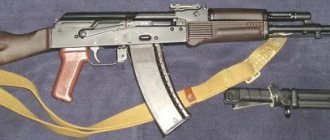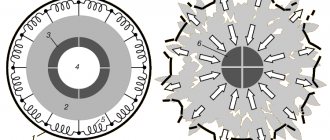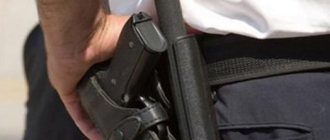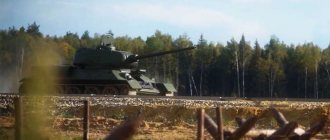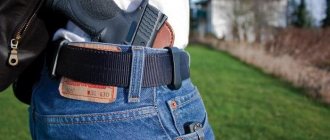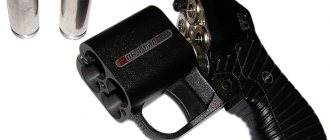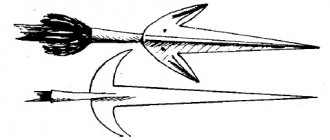I'm reuploading this tool after some time out because let's face it, it's not really THAT broken. The Seat Weapons tool is a tool (duh) that enables the player to use weapons inside vehicles, much like the Seat Weaponiser STool, but on a different level.
To activate, simply select the Seat Weapons tool inside the Posing category and hit Reload to toggle seat weapons on for yourself.
seatweapons_selfonly 0/1 — Disables/Enables the ability for players to set Seat Weapons on other players.
"Every time I shoot my aim flies everywhere" Disable dynamic recoil on the weapons you're using. There isn't much I can do about that.
"I keep shooting my own vehicle" The vehicle has a bad physics model that you can't fire out of. Find a different vehicle. There's absolutely nothing I can do about that.
How to install
License: Click on the Workshop button, in the tab that opens, click the “Subscribe” button. If you get an error when clicking on the link, log in to the Steam website and try again. Pirate: Open the archive, there will be a folder Firearms Source Weapons For Gmod 13, extract it to garrysmod\garrysmod\addons Example: D:\Program Files\Garrys Mod\garrysmod\addons
Firearms Source Weapons
Firearms pack, including: Pistols, machine guns, submachine guns, sniper rifles, machine guns, large-caliber sniper rifles (If you shoot at the wheel of a Scars series car with it, then the wheel of the car will fall off, just like in the movie “Losers”) and grenade launchers .
Operating instructions: LMB = Fire RMB = sight E + R = Throw weapon E + RMB = Change firing mode (And also, with a weapon with a bipod, it places it on the object that you approach) E + LMB = Put the safety on R = recharge
Safety mechanisms and devices of small arms
Weapon workshopSend to a friend
Small arms, by definition, must be safe to handle. To ensure safety, weapons are usually equipped with devices that make it impossible to accidentally fire while on a hike, when moving, when changing a firing position, etc., by blocking the firing mechanism or separating it from the trigger mechanism, or by blocking or separating moving parts. Such devices and parts are called fuses.
GSh-18 pistol with an automatic safety device mounted on the trigger
Safety mechanisms and devices, depending on their purpose, are divided into three main groups. The first group includes mechanisms that ensure the safe operation of automatic small arms, the second includes mechanisms and devices that ensure safe handling of weapons, and the third includes devices that protect weapon parts from contamination and damage. Safety mechanisms that serve to ensure the safety of the automation make it impossible to fire a shot when the bolt is unlocked. Since a shot with an unlocked bolt, in addition to breaking parts of the weapon and its failure, poses a great danger to the shooter himself, during the operation of the weapon it is necessary to pay special attention to ensuring the reliability of the operation of these mechanisms. Safety mechanisms that ensure the impossibility of firing when the bolt is unlocked have a wide variety of operating principles, which largely depend on the device and type of trigger mechanisms. Most often, protection functions are combined in one mechanism with other functions necessary for the operation of the automation. If the firing mechanism is powered by a mainspring, then protection against firing when the bolt is unlocked is provided by self-timers, the operation of which is associated with the operation of the locking mechanisms.
The OTs-23 “Dart” pistol has a safety, which also serves as a fire type translator. Its flags are located on both sides of the shutter casing. They allow you to put the gun on safety
If the impact mechanisms are powered by a recoil spring, then protection against shots when the bolt is unlocked is, as a rule, provided by the direct connection of the impact mechanisms with the locking mechanisms. For example, in a DP light machine gun, the firing pin can exit the hole in the bolt only after the lugs are fully retracted, i.e. completely locking the shutter. Some types of automatic small arms have double safety, which makes it possible to fire when the bolt is unlocked. For example, in the SKS self-loading carbine, this protection is carried out by connecting the operation of the self-timer with the operation of the bolt locking mechanism and by connecting the operation of the impact mechanism with the operation of the bolt locking mechanism. The first of these connections ensures that the bolt stem can press the self-timer rod only in the locked position of the bolt, and the second ensures that the trigger strike on the firing pin can also occur only when the bolt is locked. Safety mechanisms and devices that ensure safe handling of weapons place firing mechanisms in positions that prevent their operation. Safety mechanisms must meet the following requirements: ensure reliable operation, quickly turn on and off, be easy to maintain, and have a simple design. The reliability of the safety mechanisms is necessary because accidental shots when servicing weapons can cost human casualties among service personnel both in combat and in training situations. The speed of turning the fuses on and off is required to speed up the weapon's combat readiness, which determines one of the essential combat qualities of the weapon. The convenience of determining the position of the fuses characterizes both the reliability of the fuses and the speed of their switching on and off.
In the Micro-Galil assault rifle, the safety switch flag is duplicated by a flag on the left side of the receiver
Therefore, there are also fuses that eliminate the possibility of an accidental shot. They are activated by the shooter. Depending on the nature of the shooter’s impact on the fuses, they are divided into automatic and non-automatic. Automatic fuses include those fuses that do not require special techniques to turn on - they are activated independently of the shooter (most often due to the elastic forces of the springs), and are turned off by the shooter in preparation for a shot before aiming by moving the button or turning the lever by hand, or when grasping the neck of the butt or pistol grip. An example of such a fuse is the fuse of the Degtyarev DP light machine gun. In the DP machine gun, the safety lever in the form of a lever is mounted under the neck of the butt so that the shooter, when clasping the neck of the butt with his right hand, naturally presses this lever and releases the sear. When you remove your hand from the neck of the butt, the safety lever rotates under the action of its spring and locks the sear. In the Colt M1911, Heckler and Koch R.7 pistols and the Uzi submachine gun, the automatic safety is activated when the shooter’s hand is wrapped around the pistol grip, and in the Glock 17 pistol, pressing the trigger is possible only after pressing the automatic safety , built into the design of the trigger itself. All fuses that exclude the possibility of an accidental shot ensure a break in the kinematic connection between the sear and the trigger, and sometimes additionally deprive the striker of mobility (for example, in the Makarov PM and Stechkin APS pistols). This is achieved by locking or turning off the main part of the trigger mechanism (sear, trigger). Thus, in the Walther P.38 pistol, the safety mechanism provided triple protection against accidental shots, since its design made the following impossible: advancing the striker when the bolt was not completely locked; cocking the hammer to its full extent with the bolt in the forward position; breaking of the cartridge primer by the firing pin even when the trigger is hit, since the firing pin was locked by the protrusions of the safety axis. Due to their high reliability, modern models of automatic small arms now have fuses with rigid sear locking.
In the SIG-Sauer P.228 pistol, a safety release lever is mounted on the left side of the frame above the magazine latch. When lowering it down, it raises the sear, disengaging it from the trigger, which rotates under the action of the mainspring until it engages with the sear through the safety groove (trigger), thus eliminating direct contact with the firing pin
Non-automatic safeties include those that require special techniques on the part of the shooter to turn them on and off, such as turning a flag, pressing or moving a button, etc. Non-automatic fuses are the most common among modern small arms. Although they require special techniques to turn them on and off, they usually provide the greatest simplicity of operation and good reliability of operation. In this case, the safety device consists of: the fuse itself, a control button or flag, a latch and springs. If the fuse, when installed in the “safety” position, moves progressively at the moment of locking or switching off, then in this case it is most often controlled by a button and is therefore called a push-button. An example of a push-button fuse would be the fuse in the German single machine gun MG.42. If, when installed in the “safety” position, the fuse turns with a flag, it is called a flag. In modern small arms, flag fuses of various designs are the most widely used. Thus, one of the first safety pins implemented in automatic short-barreled firearms was the fuse of the German Parabellum M1900 pistol, mounted in a groove on the left wall of the frame. Using a lever with a flag, which was also located on the axis on the left side of the frame, the fuse could move and occupy two positions: “fire” and “safety.” When the flag was turned back and down, the inscription “Gesichert” was revealed, the front end of the lever rose and raised the fuse itself, which prevented the sear from turning and the bolt from moving back for cocking. When the flag was turned forward, the inscription “Gesichert” was closed, the front end of the lever lowered and carried the fuse along with it, disengaging from the sear. All non-automatic fuses, depending on the principle of their operation, are divided into locking and switching, and depending on what part they act on - into trigger, sear, trigger and combined. Locking fuses include mechanisms that place trigger mechanisms in positions in which they cannot operate due to the locking of one or more parts of these mechanisms. A typical example of such fuses is the safety mechanism in the Shpagin PPSh submachine gun, which locks the moving system in the forward or rear position. The PPSh submachine gun mod. 1941, the safety locks the bolt in the cocked and deflated positions. This fuse is made in the form of a bolt, mounted on the bolt reloading handle and held by a latch in two positions. When putting the bolt on safety, the fuse slide is inserted into the corresponding cutouts in the cover of the bolt box and fixes the bolt in the front or rear position. Fixing the bolt of the PPSh is of great importance to protect against accidental shots from the inertial movement of the heavy bolt when transporting the weapon. Switching safety mechanisms perform the same role as locking mechanisms by turning off one or more parts from the kinematic chain of trigger mechanisms. These fuses are usually mounted in the firing mechanism. One of the most typical examples of these fuses can be considered the so-called. safety platoon. It is widely used in short-barreled weapons. On the trigger in front of the combat cock there is an additional protrusion - a safety cock, which is highly reliable, by which the trigger is held after the weapon is put on safety. The cut is made deep enough and the sear cannot fall off it. Even if a pistol with the hammer cocked falls to the ground or receives a sharp blow and the hammer falls off the cock, the shot will not fire. Due to the fact that the trigger is not pressed, but the sear is pressed against the trigger under the action of the spring, it will put the trigger on the safety cock. A safety cock is available in the designs of domestic Tokarev TT pistols; Makarova PM; Stechkin APS, American Colt M1911A1 and many others. In revolvers, along with a safety cock, they also use a hammer release, as well as a transfer block.
In the G.3 assault rifle, the reloading handle can be inserted into the safety groove, complementing the main safety switch.
The trigger release was used in the Nagan revolver mod. 1895. In the design of its firing mechanism, the trigger first struck the primer, and then returned a little back under the action of the mainspring to set the safety cock. The transfer block was used in weapons such as Sterling revolvers. In Smith-Wesson revolvers, protection against an accidental shot was carried out using a blocking rod. In fact, it provided an automatic fuse. In its normal state, the locking rod kept the hammer retracted from the firing pin and allowed the shot to be fired only when the trigger was fully depressed, when it dropped down, allowing the hammer to strike the firing pin. In modern automatic small arms, fuses are widely used, which perform additional functions. Very often, the flag fuse is assigned, along with its main function - blocking parts, other tasks. Thus, in the Makarov PM pistol, when the safety is engaged, the hammer is safely released (if it was cocked), the firing pin and the entire firing mechanism are blocked, and the possibility of the hammer hitting the firing pin and reloading of the weapon is eliminated. In the Stechkin APS automatic pistol, the safety lever additionally serves as a fire switch from single-fire mode to automatic and back. When the fuse box is turned forward, the cams of its axis push the striker back and close it. At the same time, the lower feather of the sear rests against the hammer platform and does not allow it to be cocked, and the edge of the translator-safety extends beyond the left protrusion of the frame and fixes the bolt with the frame. One of the most successful designs of a flag fuse was implemented in the Kalashnikov AK assault rifle, in which the fire type switch (translator) is also a fuse made in the form of a single rotating part. Kalashnikov himself later recalled this with pride: “We were very happy that we managed to solve the problem of the fire translator. It now began to perform several functions: it provided switching of fire from single to automatic and to safety, at the same time closing the groove for the reloading handle, thereby not only eliminating the possibility of cocking the bolt, but also protecting the receiver from dust and dirt getting inside.” In the upper “safety” position, the safety lever locked the trigger, limiting the movement of the bolt frame; in the middle position, marked with the letters “AB”, the firing mode switch was set to automatic fire, and in the lower “OD” - to fire with single shots. This solution for the location of the fire type switch turned out to be very successful. The designer foresaw in advance a situation where, under stress conditions in combat, the shooter, when removing the machine gun from the safety, would inevitably squeeze the translator flag to the lowest position - i.e. shooting with single fire. Because this is how a weapon should be used in almost all difficult situations. And to ensure automatic shooting, the shooter will consciously move the translator flag to the middle position for firing in continuous bursts. In addition, such a successful and simple design solution of the translator-fuse partially solved the problem of eliminating contamination of the weapon, since in the stowed position the flag of the translator-fuse covered the groove of the receiver cover along which the reloading handle moved, which prevented dirt from getting inside the receiver. In some cases, for greater reliability of an automatic weapon, both automatic and non-automatic fuses are mounted on it, as for example in the American Colt M1911/M1911A1 pistols. The non-automatic fuse consisted of an axis, a flag with a notch for moving from the “fire” position to the “fuse” position and back, a tooth for interacting with the sear and trigger. The position of the fuse was fixed with a stopper. The non-automatic safety can only be engaged when the hammer is cocked. When set to the “safety” position, the flag is turned upward, while its tooth stops the sear, preventing the trigger from turning even when the trigger is pressed. The fuse comb went into a recess on the left side of the bolt casing, thus eliminating the possibility of cocking it. The automatic safety was placed in the cutout of the pistol grip and was a double-armed lever that swung on the same axis as the non-automatic safety. The lower rear part was shaped like a pistol grip, the upper part had several cutouts and one large protrusion that interacted with the trigger rod. The right feather of the trigger spring forced the automatic safety to rotate on its axis all the time so that its upper shoulder came out of the handle, and the protrusion was pressed against the trigger rod and did not allow it to move. Only when you wrapped your hand around the handle did the safety rotate inside the handle, so that the protrusion came out of engagement with the rod and it became possible to release the hammer.
The safety lever of the Beretta 96 pistol, mounted on the bolt casing, blocks the firing pin and at the same time serves as a safe release lever
The third group includes fuses that protect mechanisms and weapon parts from contamination and damage. These fuses come in a wide variety of designs and are made in the form of various covers and shields. The most widely used are covers for closing windows in the receiver and shields for protecting sighting devices. The covers covering the receiver windows are usually equipped with devices that automatically open them when loading. For example, in the American M3 submachine gun. In some types of weapons, in order to protect against contamination, caps are also used to cover the muzzle of the barrel.
Show source Author: Sergey Monetchikov
Comments on the article (0)
The presented article expresses the point of view of the author who wrote it and has no direct relation to the point of view of the leading section. This information is presented as historical material. We are not responsible for the actions of site visitors after reading the article. This article was obtained from open sources and published for informational purposes. In case of unknowing copyright infringement, the information will be removed after receiving a corresponding request from the authors or publishers in writing.
The problem with the weapon
In general, when playing in TTT mode, I discovered that the weapon there, when viewed from the 3rd person, sticks out from the stomach or even the groin area, as shown in this screen. However, the rest of the hl weapons are displayed correctly. I specifically downloaded this pack and tested it in a single player game. Same problem. As I understand it, these are problems with CSS weapons.
GM license. The game is Half-life 2: Deathmatch, Half-life black mesa, Source SDK, Source SDK Base 2006, Source SDK Base 2007.
I put content from CSS.
This is how my CSS weapons are displayed. This is not a problem specifically on the TTT server, because my friend’s is ok. The only difference is that the CSS was purchased from him. Sody, No no, it’s also possible that the problem is in your gmod. Or maybe there are some addons that are incompatible with your game mode, remove all addons and see if anything changes. If nothing changes, then remove the gmod and reinstall it. If this does not help, then update the mode. If this doesn't help, throw away your computer (c) Blah blah blah
There are no mods at all. The same problem exists in the standard sunbox. This pack uses CSS content. In first person everything is fine, there are textures and sounds, but in 3 it crashes.
I'll try to rearrange the um. MB will really help.
Sody (11.05.2013, 22:32) wrote: I'll try to rearrange the um. MB will really help. Maybe something from the .dll has failed, try reinstalling the gmod. Or you can go to the folder X:\Steam\steamapps\Your nickname\garrysmod\garrysmod and delete the lua folder (if it exists)
In general, I solved this problem as follows:
From the folder Drive:\Steam\SteamApps\nickname\garrysmod\garrysmod\models\weapons, delete all files that begin with the letter “W”, and leave those that begin with “V”. As I understand it, the former are responsible for how the equipped weapon will look from the outside, and the latter are in your hands. I don’t know if it’s just me who is so lucky and unlucky at the same time, but with HL2DM installed with HL2EP2 and missing CSS, I already had third-person models and textures for CSS weapons.
Download links (Size: 112.65 MB)
Attention! You do not have permission to view all links. We recommend that you register or log into the site under your name.
Interesting Facts. Unusual pistol safeties.
In this article I would like to talk about the most unusual safeties on modern pistols. And I’ll start my story with the Russian pistol.
PSM
PSM - Self-loading Pistol Compact. The safety of this pistol deserves special attention, since the functional implementation is very original! Due to the fact that the safety is located on the back of the slide (near the trigger), the shooter can simultaneously remove the pistol from the safety and cock the hammer with one movement of his thumb!!!
Colt 1911A1
Of course, I can’t forget about the calling card in Colt pistols! In addition to the main safety, Colt pistols, particularly the legendary Colt 1911A1 , have a button on the back of the grip that acts as an automatic safety. It blocks the trigger until the pistol grip is tightly grasped by the hand.
Mauser M2
Not the most famous pistol among fans of this type of weapon. However, it has an unusual design, too safe and inconvenient to use. What is its excessive security?
This pistol features:
1) indicator of the presence of a cartridge in the chamber (on top of the bolt),
2) automatic striker safety, which did not allow the striker to activate the primer before the end of the full stroke of the trigger,
3) automatic magazine safety - even if the cartridge is loaded into the chamber, but the magazine is not inserted, the shot will not fire!!!
4) and the fuse itself, the hero of today’s celebration, located in an extremely original place. In general, look at the photo))))
SigSauer P225
This safety principle is implemented in most SigSauer pistols, but consider its police version, which does not have a separate safety flag, but nevertheless the safety exists! On the left side of the handle there is a safety release lever, its head protrudes behind the trigger guard. When the lever is pressed down, the trigger will be released and the safety cock will be cocked. There is an automatic firing pin safety that locks it until the last moment of pressing the trigger before the shot itself. But this implementation has a disadvantage - the release is very, very heavy - 5.5 and 2 kg, respectively, for self-cocking and normal modes. I note that the lever above the left cheek of the grip is a slide stop used when disassembling the pistol, and not a safety.
Glock 17
Where would we be without it)))) The pistol is equipped with three independently operating automatic fuses. Glock called this system Safe Action. The safety lever, which is equipped with the trigger (tab on the trigger), blocks its movement back and releases it only when the shooter consciously presses it. The automatic firing pin safety makes it impossible for the firing pin to hit the cartridge primer in case of accidental de-cocking of the sear. The trigger rod, with its special protrusion, lifts the safety, which is a cylinder with a groove, and opens the way forward for the striker. The shockproof fuse is a cross-shaped protrusion of the trigger rod that fits into the groove of the bolt-casing. It prevents the combat platoon from breaking off the sear during an external blow
04 June 2013
Literature
- Material part of small arms. Ed. A. A. Blagonravova. - M.: Oborongiz NKAP, 1945
- Instructions for shooting. M.: Military Publishing House of the USSR Ministry of Defense, 1973
- Zhuk A. B.
Encyclopedia of small arms. - M.: Voenizdat, 1998. - Monetchikov S.
[www.bratishka.ru/archiv/2007/3/2007_3_12.php Safety mechanisms and devices of small arms] // Bratishka: Monthly magazine of special purpose units. - M.: LLC "Vityaz-Bratishka", 2007. - No. 03. - P. 48-51.
Also in this section:
Installation of a set of plastic parts - butt and fore-end on the Izh-27
11.04.2019
Section: “Rifle Mechanisms”
Installation of a set of plastic parts - butt and fore-end on an old Izh-27 shotgun with a stepped box shank.
Read →
